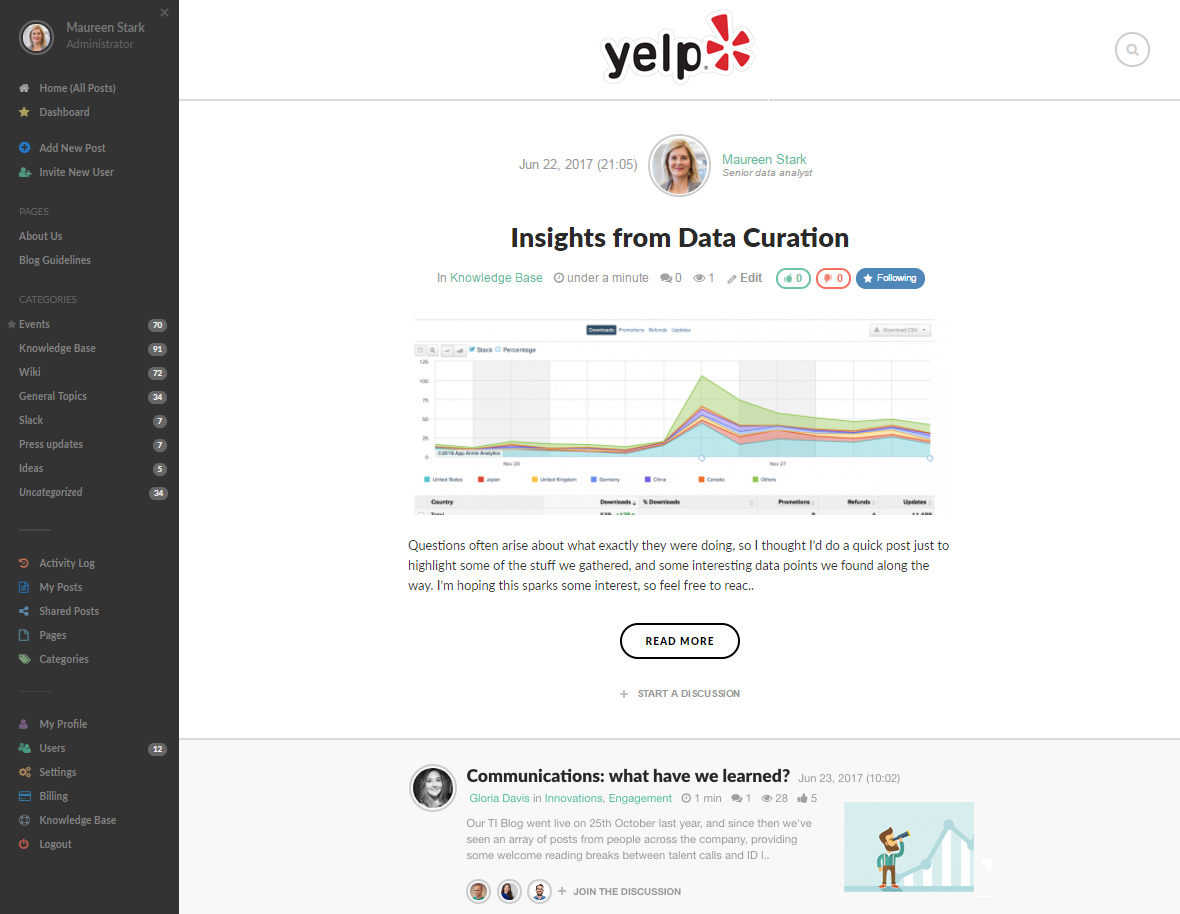
This is a story of a communication manager’s fight against newsletters. Be prepared - it’s gonna be brutal.
As an online editor and content manager with a background in numerous media outlets and a fair number of middle-sized organizations, I usually find my place within the Communications Department (or I’ll run it by myself, in some cases). Yet, no matter the size or type of a company, my tasks were always similar, usually including newsletter management, whether it's an organization’s “behind the scenes” featurette or a targeted email campaign. Over the years, I’ve sent so many newsletters - both internal and external - that I can now make a decent email in my sleep. And sometimes I do... unfortunately.
In other words, I’m done with rusty email automation platforms.
At least for today.

Nowadays, when I’m mostly focused on the perks and challenges of Internal Communication, I realized how exhausting and truly unnecessary internal newsletter emails are. In this article, I will try to explain this somewhat controversial idea and present my communication tool of choice.
Email Platforms are Messy
First and foremost - classic CRMs and automated email platforms can be such a bore. With the exception of some tech companies, there is hardly any chance that the organization is using its own email software for the distribution of information among its employees. This means that whoever is in charge of internal communication (and that is usually a Communications or HR Manager - i.e. someone of the non-tech staff) has to deal with more third-party software than necessary.
First, there is a software to keep and manage company documentation, then project management software, and, finally, a platform to share internal news. That does sound a bit too much, doesn’t it?
Having an ultimate solution to keep all of the above, including the entire knowledge base, always seemed too good to be true. Simplifying at least a part of the job was always on my list of priorities.
Realizing how easy it is to run a centralized platform to share both knowledge and news definitely changed things for the better, which is why I always recommend an Internal Blog to all of my colleagues in Communication.
To reason why I truly believe you should ditch internal newsletters and start running an internal blog to reach out to your employees more successfully, I will now go through the complex process of creating an internal newsletter campaign step by step. (If you wish to read a more objective think piece on this topic, I sincerely recommend this article)

So, here’s how it usually goes.
Step-by-step Guide through Newsletter Management
...and why you should ditch it
1. Setting up the recipients
If you’re doing this job for a while, chances are you already have (several) meticulously defined recipient groups for different types of newsletters - one for the Design team, one for Operations, one for the executive Board, etc.
But, if you’re taking over this assignment after a person who was running emails for years, you might need time to grab hold of it. If you ever do. In one of my previous positions, we had a huge contact base and they were all divided into god-knows-how-many groups.
I literally needed months to figure out the logic behind them and it was so frustrating. All in all, managing Groups on platforms for email automation is not always easy, mostly because that is not the main purpose of these programs.
On the other hand, an internal blog, like any blog to be fair, has no recipients. The blog has users, which means everybody is on the same side. Furthermore, users can be invited, edited, removed, and divided into groups as well, but their arrangement is far more easily manageable and could be moderated even after a blog post is published.
A capable internal blogging platform such as BlogIn allows Administrators to assign roles to blog users (that's usually employees within the organization), which means they could have an array of roles starting from a passive reader, a commenter, and an active user able to post content as well.
2. Playing around with email templates
Newsletter templates are dubious species. They are products of dedicated designers and frontend developers doing the best they can to please the needs of casual users and content writers - all within the limits of a regular email. Aarrgh!
To be fair, there are many great and intuitive templates, and sliding content block around is fun. In some cases, you might need to test your basic HTML skills (if you have any) to make a random email look the way you want it to look. In other cases, you can create a logo and add it to the template as part of building your brand image.
Plus, there are so many limitations! Background color codes don’t always match. Reusable templates get faulty over time. The image you have is way too small for the designated image block. GIFs don’t work. And finally, you just can’t find the right content block for your, well, content.
When creating posts on the internal blog, you are practically limitless. You use a visual Editor that supports all kinds of files including charts, GIFs, embedded sound files, and videos, just to name a few. This way, you don't need to worry about the design so much, so you can focus on the information you are trying to share.

3. Making sure all the details are in place
Did you know that in some mailing platforms you can’t send the campaign without the Unsubscribe token? And what do you do when an employee unsubscribes from their main source of company-related news? Do you urge them to subscribe against their will? Send them to HR? Hmm… I don’t really think there is a common way to solve such a situation.
There are other small things you should keep in mind as well. Newsletters could, as they tend to, go to Spam because there is no scientific method to prevent them from doing that. Or, if they go over 102 kB in size, emails could get clipped in Gmail, and there is no way to be sure that a busy employee will click on “View entire message” and read the whole thing.
Newsletter Management means dedication and a keen eye for details, and not all Internal Communication Officers are equipped (or have time) for an assignment that takes so much effort to execute.
4. Sweating before clicking “Send”

Is the test okay? Let’s take a look at it in another browser. Am I missing a typo? Are all links working? There are so many questions, so many details to go through before finally sending a campaign no matter how important, big or small it actually is. Because when the email is out (even within one company) - it really is gone forever. There are no additional edits, no way to add recipients other than to send it all over again to another group.
I can’t even make a comparison with internal blogging here, as well as to the step above. With an internal blog, you don’t have to stress that much about making mistakes - you can edit the post you published at any time. So, if you find a typo or a broken link in your post, you can fix it within seconds.
More importantly, a well-organized internal blog is one that users themselves can browse easily. This means they don't have to spend time searching through their already cramped inboxes to find the information they need. Centralized internal platforms are built to be user-friendly and easily manageable, and users actually appreciate that a lot. In other words, blogs are designed to save time and nerves for everybody!
5. Listening to the silence
Once you send it, you’ll find yourself meditating in front of the statistics chart, counting openings and click-throughs. And to make matters worse, there is no way to interact with recipients.
If someone wants to commend your work, provide additional info or simply comment, they have two options: a) to send a reply to the generic email address they are not sure someone even checks; or b) message you via a completely different communication channel.
Isn’t that all a bit too confusing, if I may ask? Truth be told, newsletter today is still a valuable communication tool, particularly for media outlets and websites with active blogs. Heck, there’s a good chance you are reading this article because you opened a catchy email in your Inbox! But, regarding internal communication, we need more than newsletters. We need something “alive”.
On an integrated internal blogging platform such as BlogIn, users are invited to conduct a conversation below each post, if the admin approves. Contrary to newsletter management, building up a solid internal blog base means teamwork, and everybody can be assigned the Editor role if such arrangement works for the company.
Internal blog, when moderated accordingly, could be a place for knowledge sharing, but also a place for interaction, discussion, for building a team spirit, and boosting transparency within a workplace.
And most importantly - it is not yet another email. So, why not giving the internal blog a try?!
